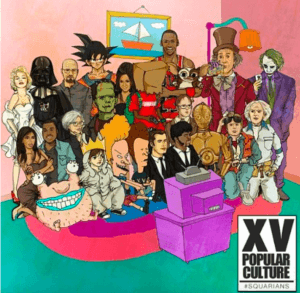Science has traditionally been a challenging subject for teachers to teach, and for students to learn. From casual talks around my staffroom, teachers attribute this to an outdated curriculum combined with a palpable student disconnect. However, as the push for greater student literacy in the Science, Technology, Engineering and Mathematics (STEM) subjects powers ahead, we must ask ourselves how can we as teachers increase student engagement in the science curriculum? To kick off the journey towards engagement, teachers need to increase two things- student efficacy and student interest in science (not necessarily in that order!).
A student’s self-efficacy, which is defined as the self-belief that a certain goal can be achieved, forms through accumulated successes or student ‘wins’. Efficacy can be enhanced through effective pedagogy and confidence building- a topic that needs a whole separate series of blogs in itself!
Besides self-efficacy, the other part of this formula is about increasing student engagement by incorporating their interests in to the classroom. This is where pop culture has the potential to step up and shift STEM attitudes from ones of apathy to ones of excitement. By showing students how their interests relate to science contexts, perhaps such disconnects can be bridged?

So how can we do this? Pop culture is ever-present in our lives. Whether it’s via digital platforms, Hollywood, movies or memes, there is no shortage of inspiration. You could sources some science-themed pop culture inspiration from:
YouTube: This video-sharing website has no shortage of ‘edutainment’ available for creative teachers to implement. Whether you are teaching chemistry or astronomy, I encourage you to explore the range of parodies that have been created with the aim of facilitating science learning in an engaging way. Parodies such as All About That Base- No Acid teach and entertain, or if parody videos are not your style, why not have a look at what CrashCourse has to offer. Crash Course present science concepts though narration and animation in order to create engaging and visually pleasing educational videos.
Memes: Memes link recognisable images to slogans that range in subject. Often comical in nature, memes can be used to hooked students in at the start of a lesson. Why not incorporate these memes from ThoughtCo or Facebook in your next powerpoint to add some interest?

Movies: Incorporating movie clips in to the classroom increases student engagement by relating the science curriculum to student experience and knowledge. Using movies in the classroom requires some skill in order to ensure the teachings are effective and achieve the learning aim. Besides arranging your own movie-inspired learning plan, you can look at what others have already done. See this website Teach With Movies for inspiration.
When it comes to creating engaging science lessons, pop culture provides us with an avenue to make the subject more relatable. Maybe it’s time to use all of those memes and movies that students love and create a bit of science learning and teaching? It’s now up to you science teacher to use what’s popular to bridge the gap.

I loved reading your blog post Amy. As a Year 6 teacher, I have to admit that the key learning area of Science is my kryptonite! Most certainly, my students lack engagement, which correlates with a lack of self-efficacy. So, it was great to read about some practical strategies that I can embed into my teaching practices to increase my students’ engagement. I had a chuckle when you mentioned the use of meme’s as I’ve had some Star Wars pop culture referenced memes in my classroom for a while which my kids like. I only realised the link to pop culture and the power of them through your post and will endeavour to use them more practically in my teaching. I was wondering if you identified any effective ways to incorporate blogs or other collaborative tools into the teaching of STEM? Thanks again for the post.
I was always the kid walking to the bus stop with a book glued to my nose so I can totally relate to how you feel in this post. As a primary school teacher, I look around our library and see the shelves filled with the same books I read as a child! I have often wondered whether kids actually enjoy reading these books 20 years later or whether our state system is miserably outdated. After reading your post, I am thinking the latter. I love how you said, “It is the mark of good literature if it makes you feel something.” I had a fantastic English high school teacher who chose books that were wildly inappropriate for young and promiscuous teenagers but they taught me about life and all the wonders it held. Every primary school I’ve taught at has been so structured in defining what novel was studied, in line with the Classroom into the Curriculum (C2C) program which is really frustrating for myself. Are high schools more flexible in their approach to what resources they make available in the curriculum? I fear that I am limiting my students’ engagement and therefore, their success, by providing texts that are not in line with their interests and drawing on the changing trends of pop culture.